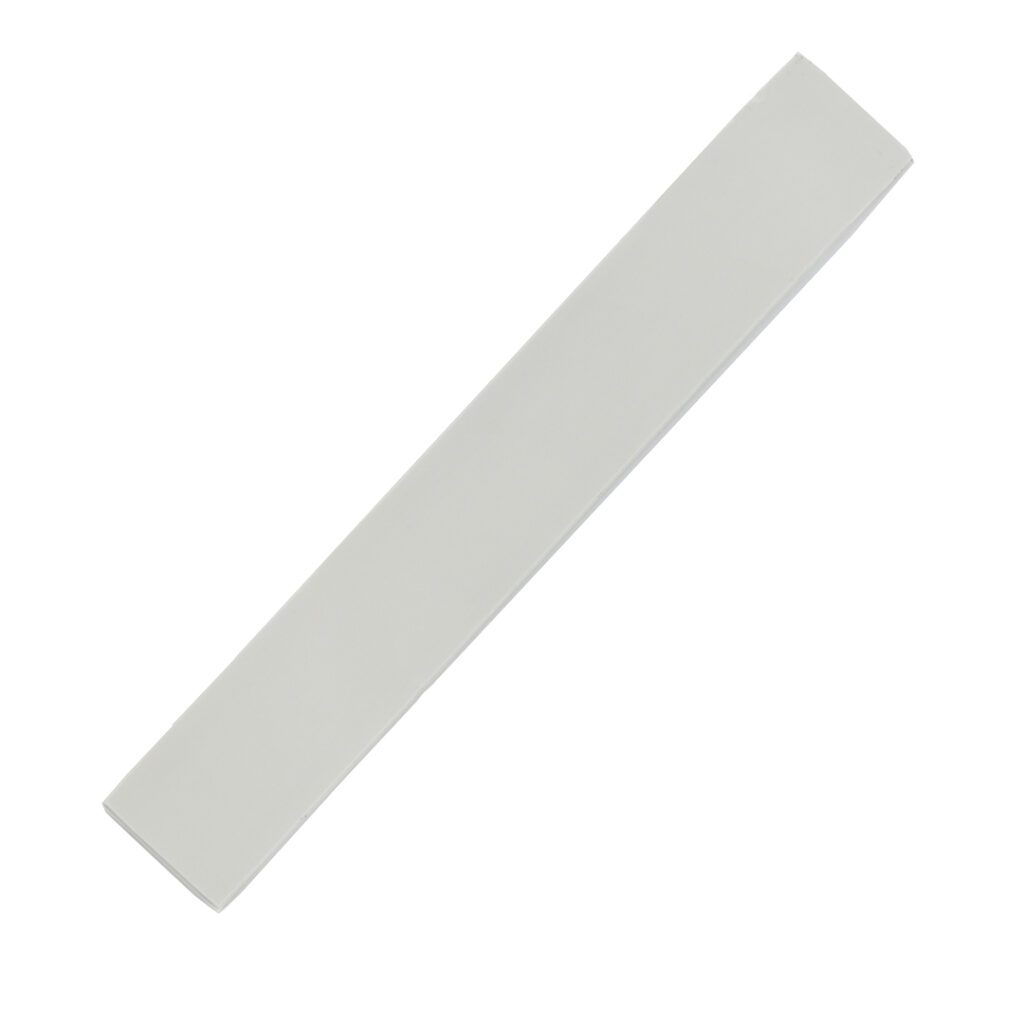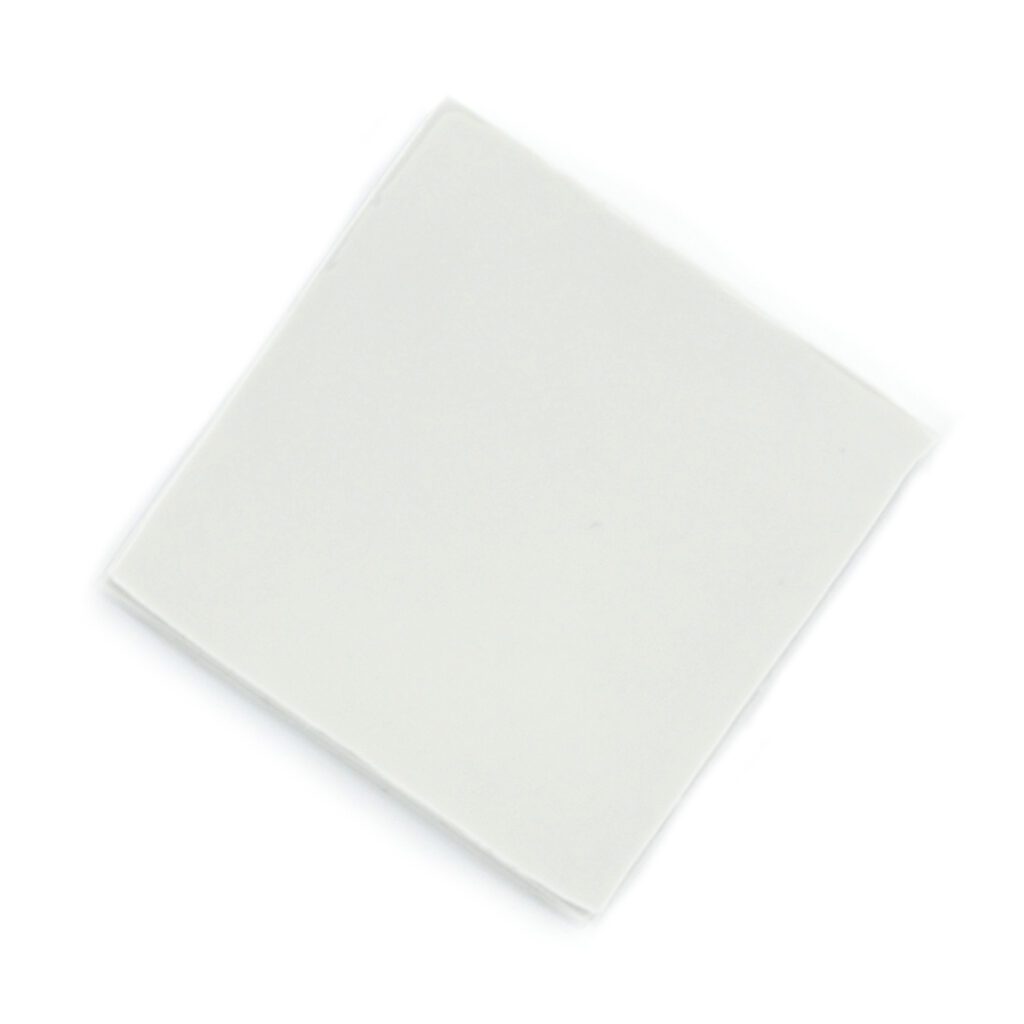Table of Contents:
- 1 What is thermally conductive tape?
- 2 Thermally conductive tape - working conditions and additional information
- 3 In what devices is thermal conductive tape used?
- 4 Thermal conductive tape replacement - key information
- 5 Why should the tape be replaced regularly?
- 6 Failure to replace the thermal conductive tape - possible consequences
- 7 Thermally conductive tape - chemical composition
Thermally conductive tape is a material with specific properties that allow efficient heat conduction between two surfaces. It finds application among others. In electronics.
What is thermally conductive tape?
Thermally conductive tape
is designed to improve heat transfer between surfaces (components). Mostly it comes in the form of a rectangle or square with different physical dimensions. It is used in places where the use of thermal conductive paste is impossible or difficult.
The thermally conductive tape is distinguished by its flexibility and high compressibility for a perfect fit to various surfaces and components. An adhesive layer on both sides provides excellent adhesion.
Thermally conductive tape - working conditions and additional information
Each thermally conductive tape retains its properties under certain operating conditions, more specifically, at the operating temperature. Information on the temperature range should be in the instruction manual. Popular models are designed to operate at temperatures from about -60 ℃ to about +200 ℃.
Thermally conductive tapes are widely used in various types of electronic devices and circuits. They serve, among other things. for making the connection between integrated circuits and heat sinks or other heat dissipation elements. To better understand the necessity of using thermally conductive tapes, recall that air is an insulator. The more air between the heat-generating element or surface and the heat sink, the lower the thermal conductivity.
What does this mean in practice? Even if the heatsink is properly sized, the heat dissipation efficiency may not be sufficient. Thermally conductive tape, due to its compressible properties, allows maximum reduction of air between surfaces. Thus, it provides free heat conduction.
In what devices is thermal conductive tape used?
Thermally conductive tapes
are used in a variety of telecommunications equipment, computers, game consoles and power systems. In addition, they are used in applications where efficient heat dissipation, and thus maintaining a stable temperature, is crucial.
The tape provides optimal working conditions, among other things. LEDs, processors, integrated circuits and other components that generate heat during operation.
Thermal conductive tape replacement - key information
Replacing the thermally conductive tape itself is a relatively easy process. Note, however, that it practically always involves the dismantling of, among other things. housing and various components of the device or system. In the first step, gently remove the old thermal conductive tape. Then get rid of any residual glue. The best way to do this is to use isopropyl alcohol. The tapes are offered in universal sizes, so they need to be cut to size. When the surface or component has been thoroughly cleaned and dried, then you need to carefully apply the tape. When removing the protection of the adhesive layer, you need to be especially careful not to touch it. The tape must adhere evenly over the entire surface. Air bubbles are unacceptable.
Why should the tape be replaced regularly?
Each thermally conductive tape has a certain lifespan. This is the period during which it retains its original properties. Information on service life should be found in the product manual.
During operation, and especially when exposed to high temperatures, the tapes gradually lose their conductive properties. In practice, this means that the amount and rate of heat conduction decrease. The worse the conductivity, the greater the risk of temperature rise and component damage due to overheating.
For this reason, regular tape replacement is essential to ensure optimal operating conditions for processors, ICs, LEDs and other heat-generating components.
Failure to replace the thermal conductive tape - possible consequences
Replacement of the thermally conductive tape should be done before it gradually loses its properties. If it is not replaced with a new one, then various problems may arise. The most common of these is overheating of selected components. This phenomenon should be understood as the operation of electronic components or systems outside the operating temperature range. Excessively high temperatures are a direct cause of shortened service life and premature failures. Another consequence of not replacing the thermally conductive tape is a reduction in performance. A good example is a processor that lowers its clock when it gets too hot. This protection, on the one hand, protects the chip from damage, while on the other hand, it slows down the operation of the computer, for example.
A sudden increase in the temperature of key components of the device can lead to an emergency shutdown. Restarting the equipment is usually possible only after the temperature is reduced to a certain level. In addition, overheating components have a higher demand for electricity.
Thermally conductive tape - chemical composition
The chemical composition of the thermally conductive tape may vary depending on the specific model and manufacturer. The most commonly used tapes are manufactured, among others. made of polymers that are filled with heat-conducting particles. Mostly it is clay oxide and zinc oxide. In addition, selected tapes are enriched with other substances whose main task is to increase adhesion, i.e. adhesion to the surface.
The chemical composition of the thermally conductive tape directly affects the thermal conductivity. This parameter is expressed in the unit W/(m-K). It refers to the ability of a given material to conduct heat. Tapes used in electronics are distinguished by a conductivity of about 6W/mK.
How useful was this post?
Click on a star to rate it!
Average rating 0 / 5. Vote count: 0
No votes so far! Be the first to rate this post.





















